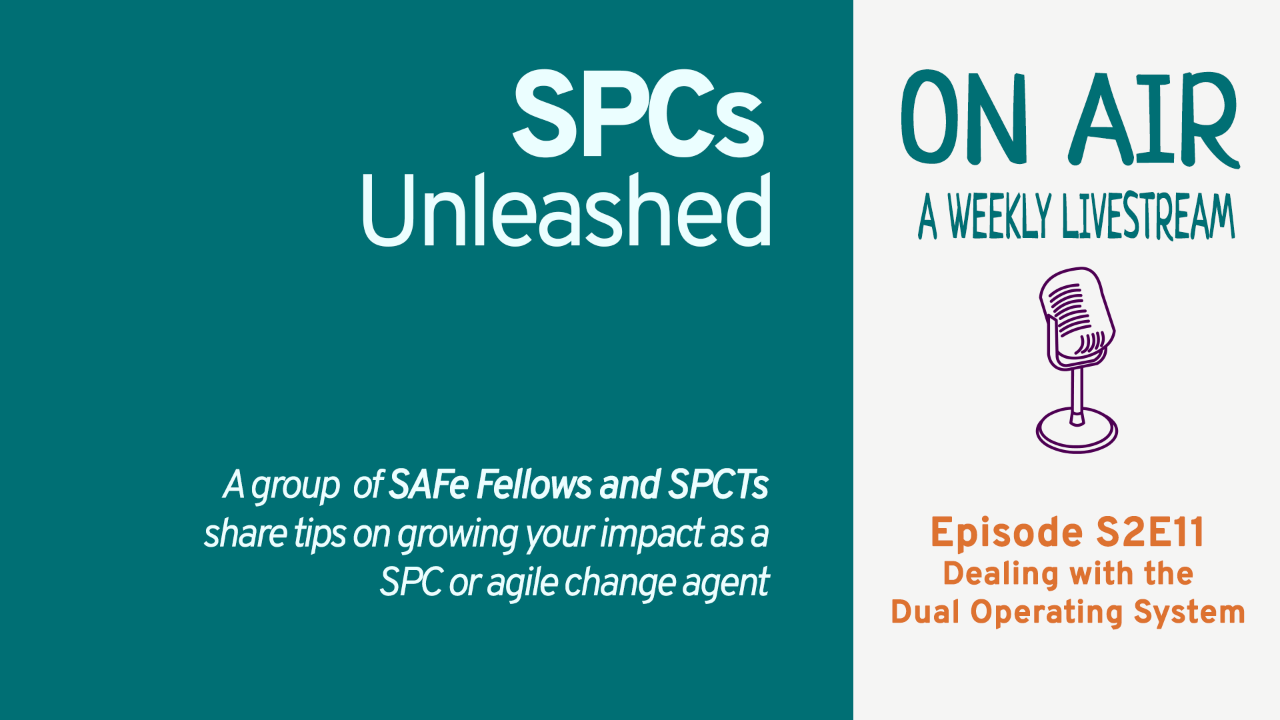SPCs Unleashed S2E11 - The Dual Operating System in Practice
Mar 29, 2025
“Leaders have to do more than simply say ‘we have two systems.’ They have to actively steer the organization so it’s both robust and free to innovate.”
Stephan Neck
What happens when an organization outgrows the myth that “all you need is cross-functional teams”? In this episode of SPCs Unleashed, Stephan, Ali, Niko, and Mark dig into the Dual Operating System—the concept that healthy enterprises need both a stable hierarchy and a network of agile teams. Balancing these two “systems” can be tricky: too much network, and chaos creeps in; too much hierarchy, and innovation stalls.
The group shares real-world stories where line managers struggled to find their place in an agile environment, and teams were forced to “figure out” things like career growth, performance management, and compliance. The central point? A thriving enterprise can’t ignore its operational backbone or the people who keep it running—yet it also can’t let old school structures choke the flow of value.
Key Highlights
- Hierarchy Still Matters: Killing off management leads to confusion, with nobody taking care of essential processes or people’s long-term growth.
- Network for Speed & Innovation: Agile teams excel at quick delivery and iterative feedback, but that alone can’t address bigger structural needs.
- Role of Leadership: Far from being “evil,” leaders must shift focus—away from daily task management and toward supporting employees’ development and well-being.
- Avoid Over-Fluffiness: Simply “trusting teams” without clarifying accountability and career pathways can create a ticking time bomb.
- Concrete Mechanisms: Allocating a fixed budget or “time code” (e.g., a 10% buffer) ensures capacity for improvement and competence development in the network.
Actionable Insights
- Involve HR Early: They offer critical expertise for dual reporting lines, role clarity, and setting up the right systems (e.g., Workday, SAP) to support both hierarchy and network.
- Formalize Time & Budget for Growth: Reserve capacity for improvement and cross-team learning—otherwise urgent priorities push it aside.
- Educate Managers on “New Leadership”: Shift from daily control to integrator responsibilities—connecting people across silos and guiding their professional journeys.
Conclusion
Embracing a Dual Operating System means recognizing that “manager” isn’t a bad word—hierarchies can be powerful for stability and talent development, while agile networks spark rapid innovation. With the right balance, clear processes, and respect for both sides of the coin, enterprises can keep their core strong while racing forward into new possibilities.
References
Six Simple Rules by Eve Morieux and Peter Toolman
